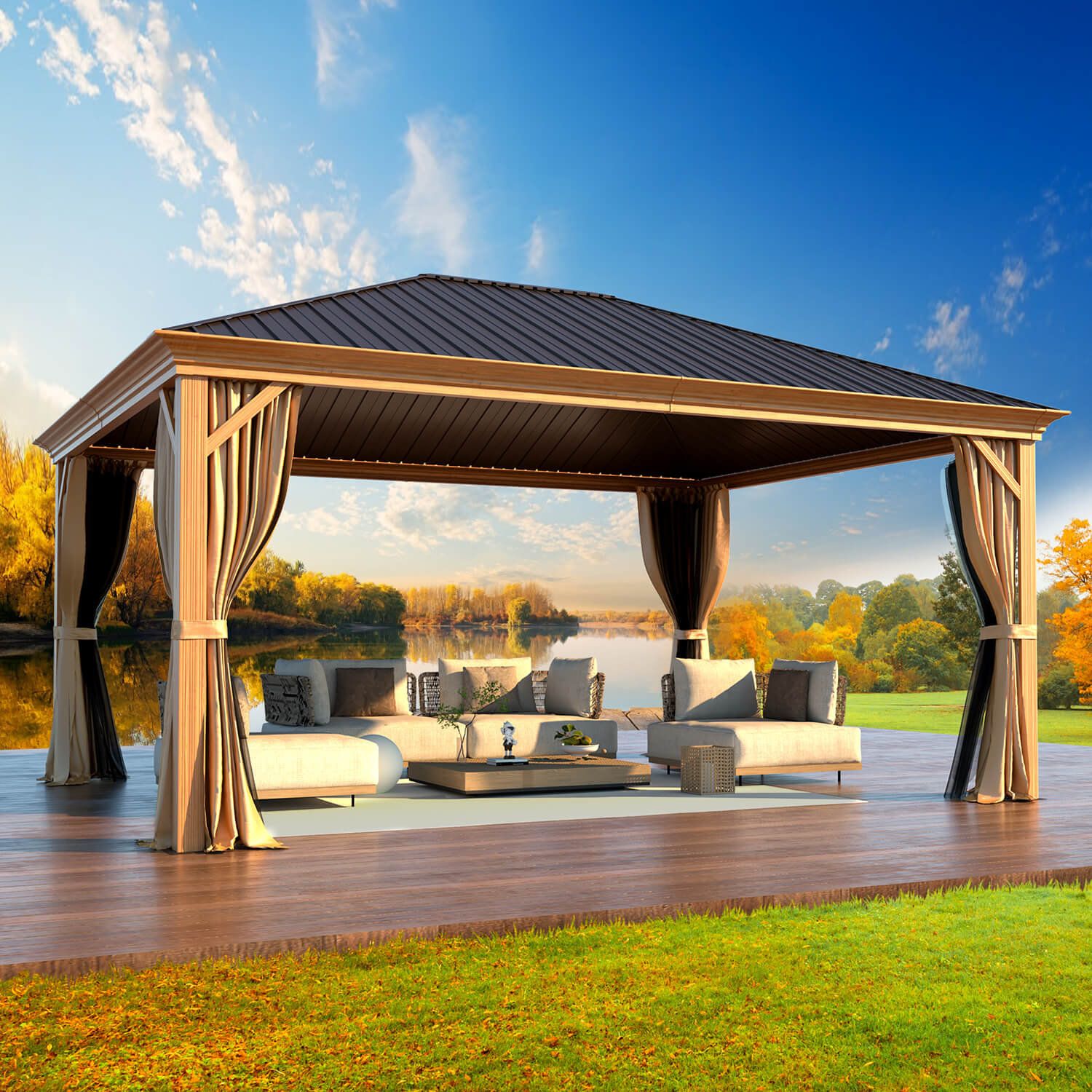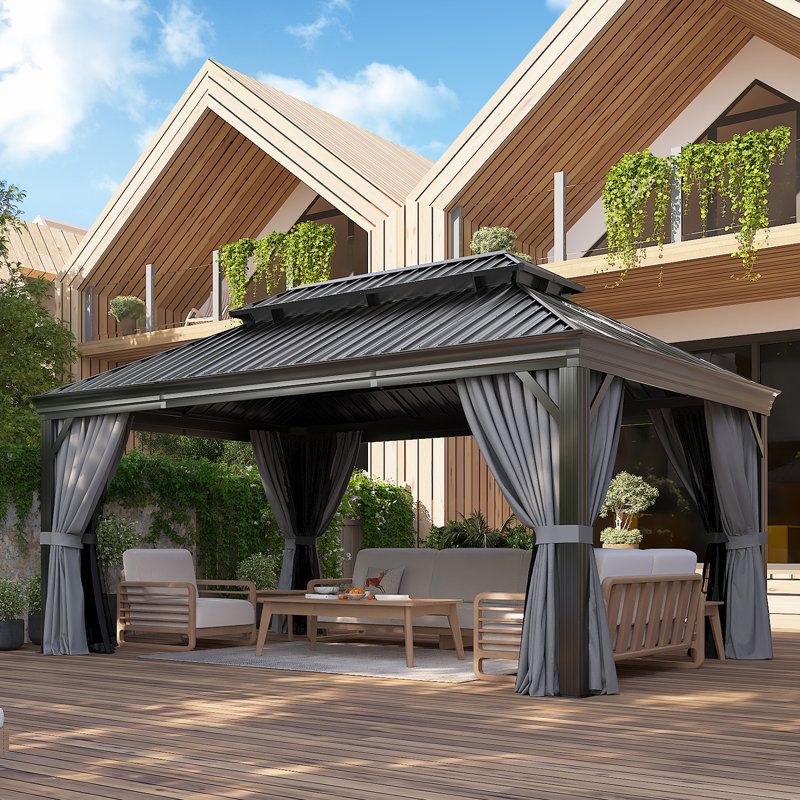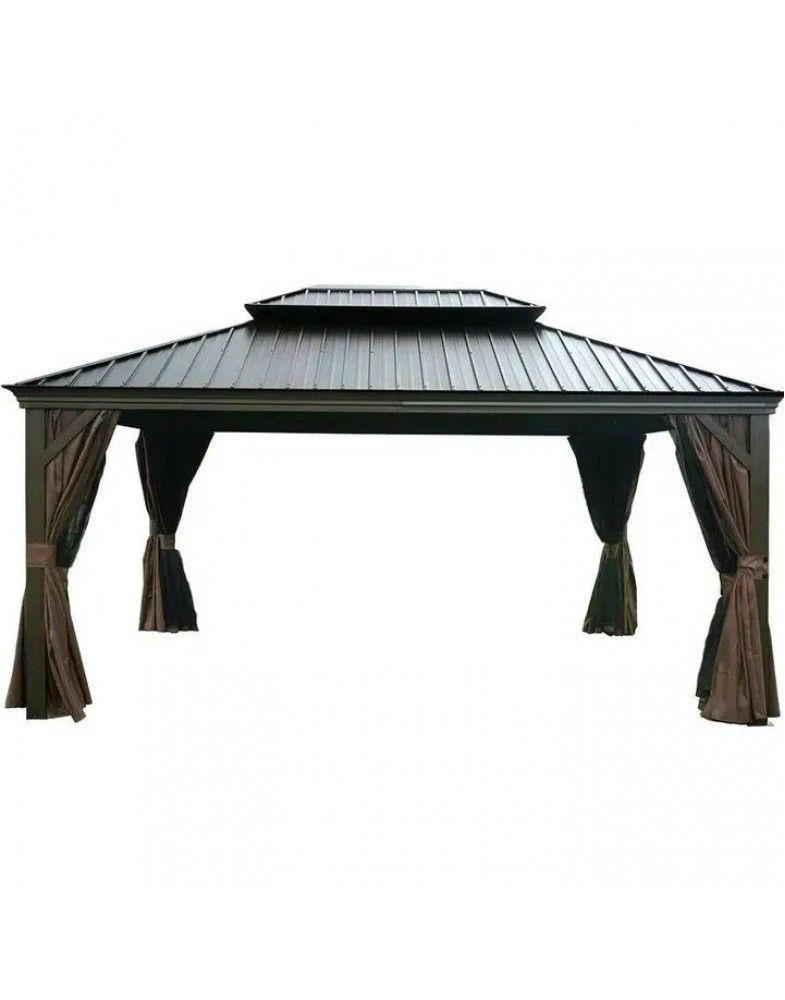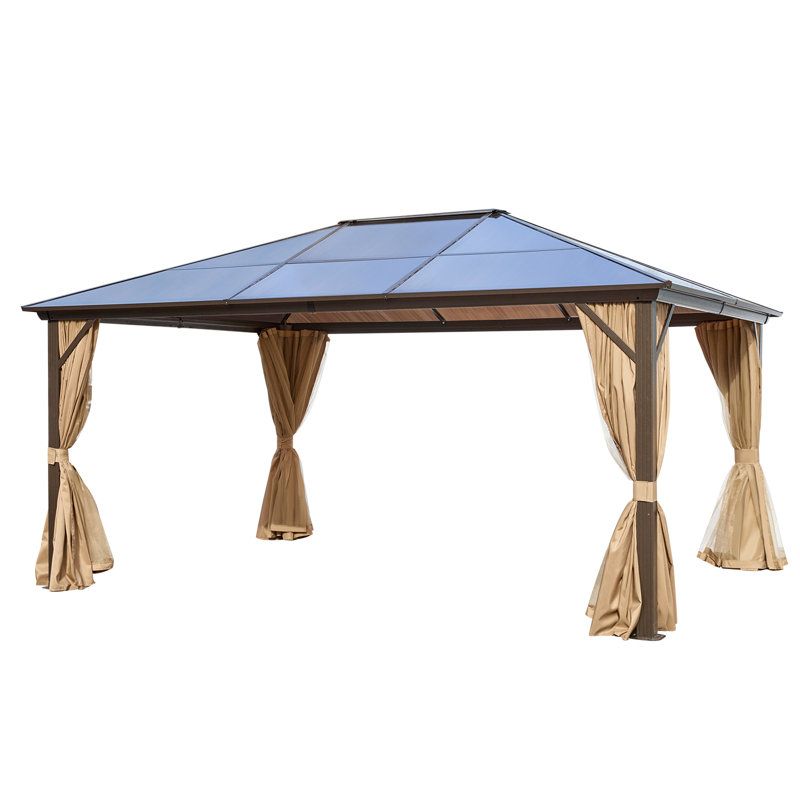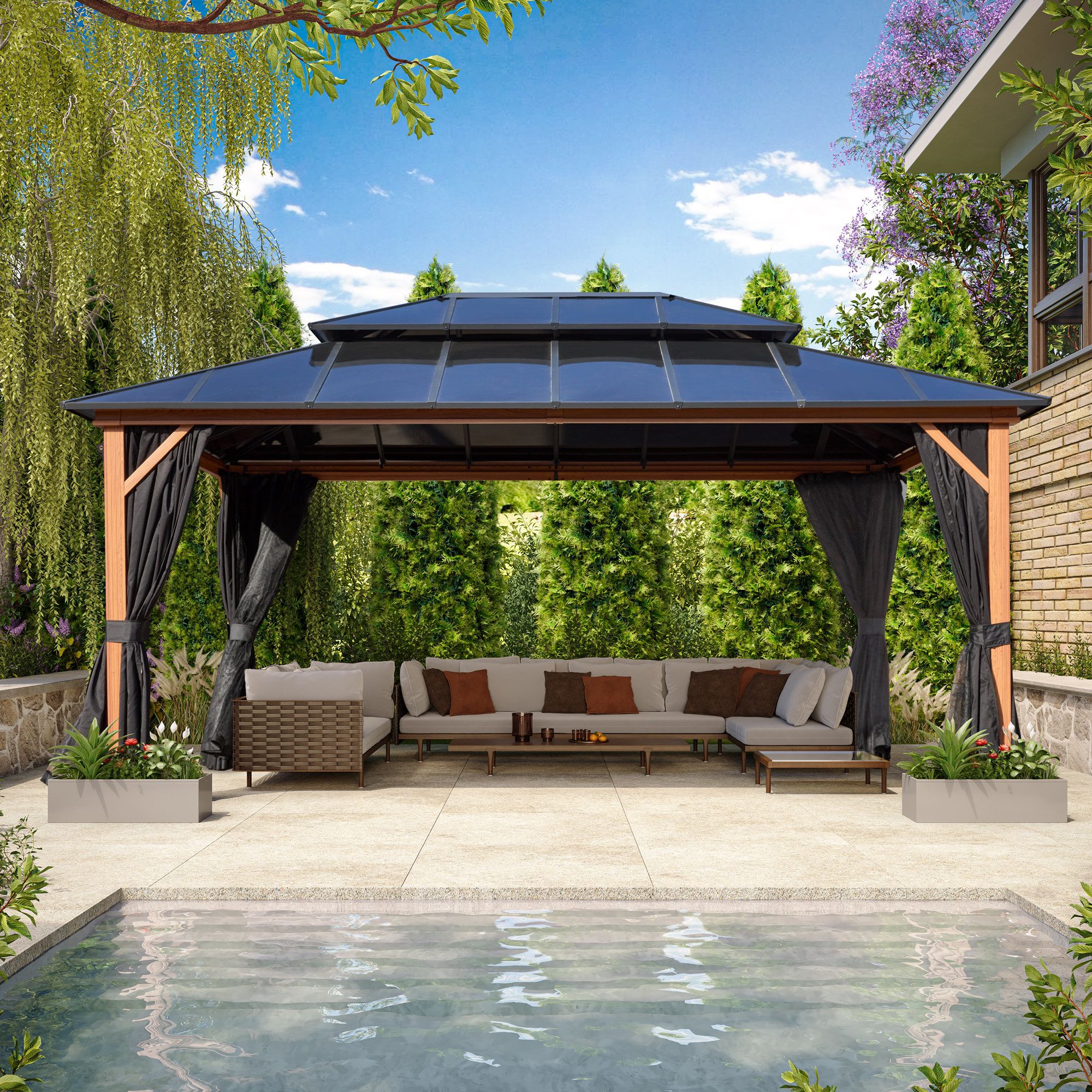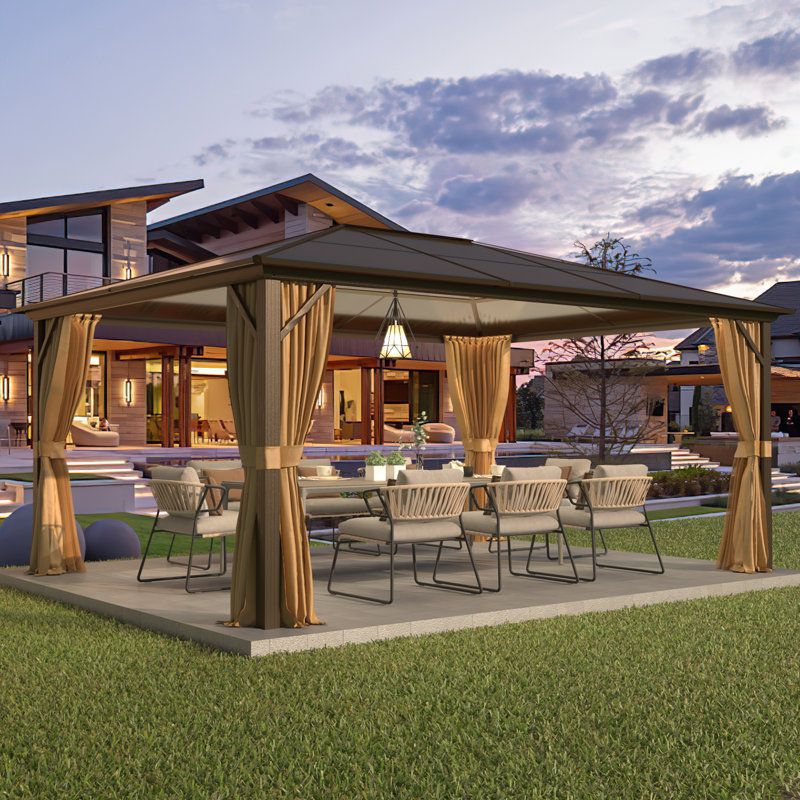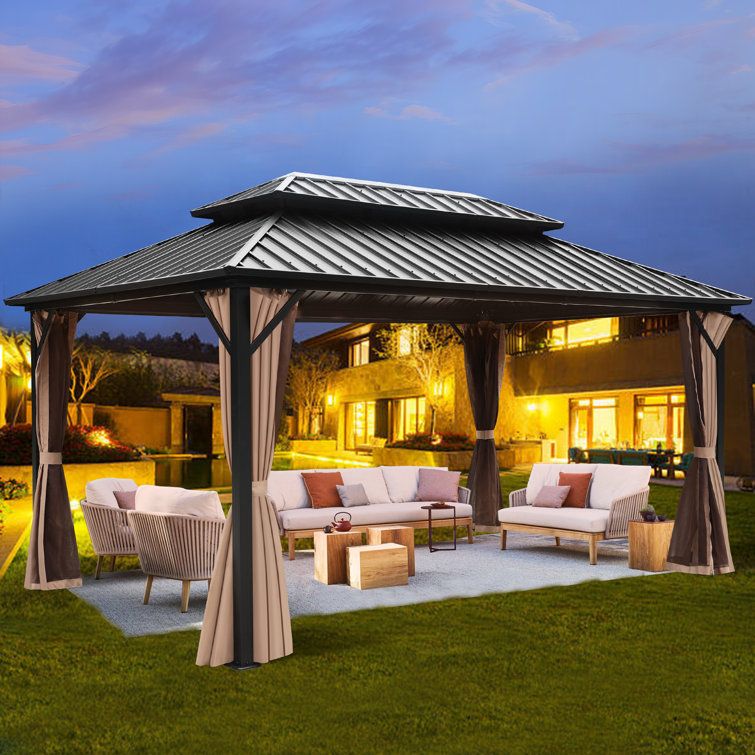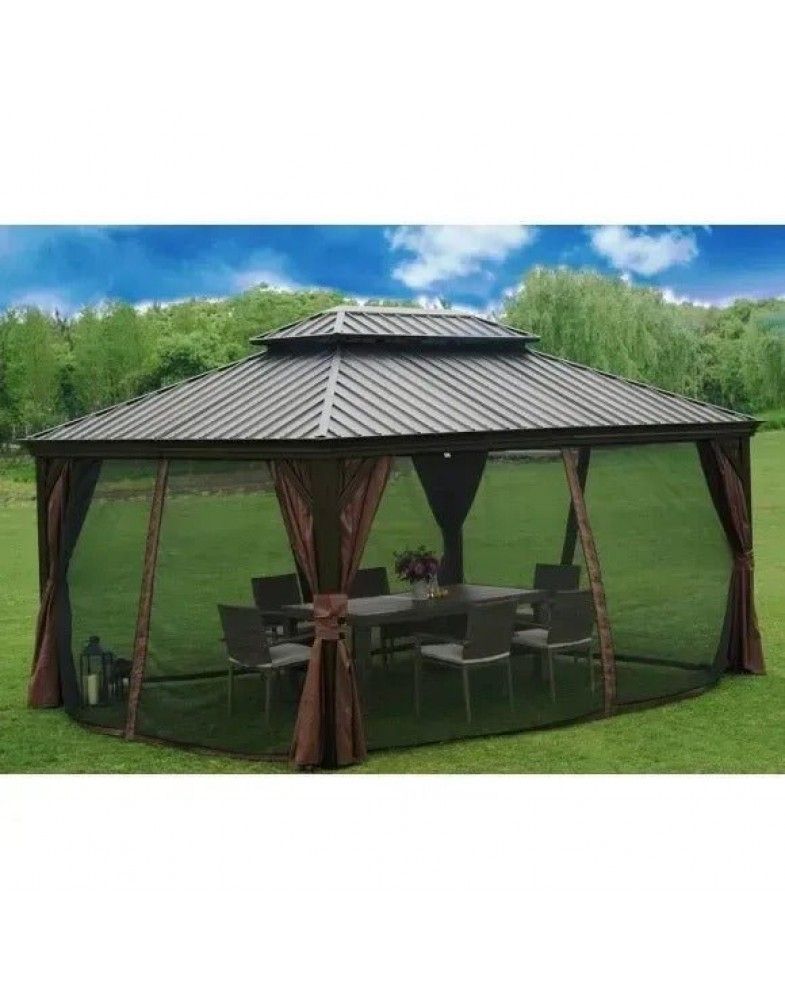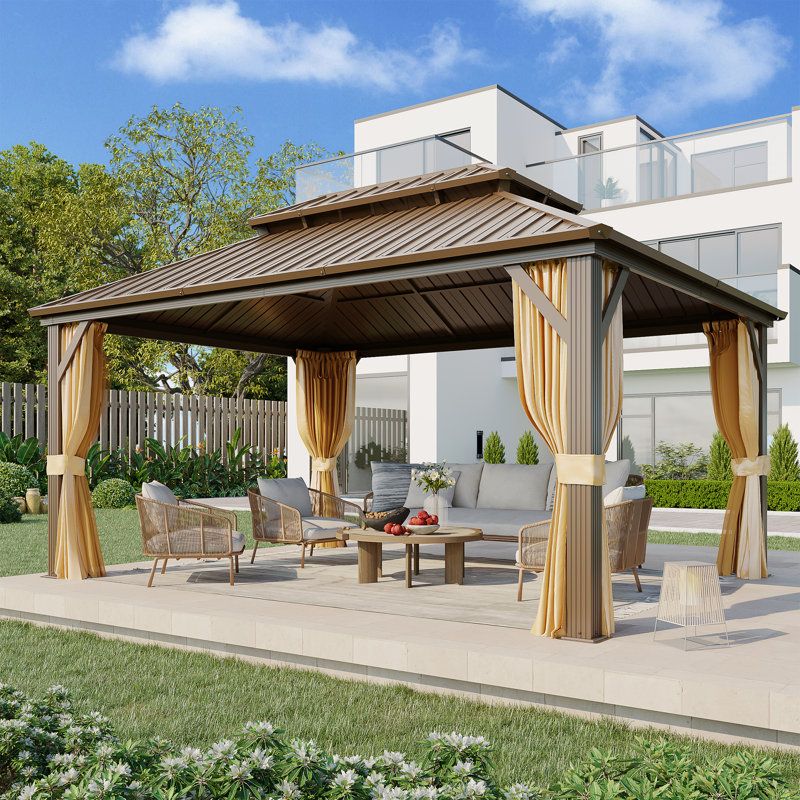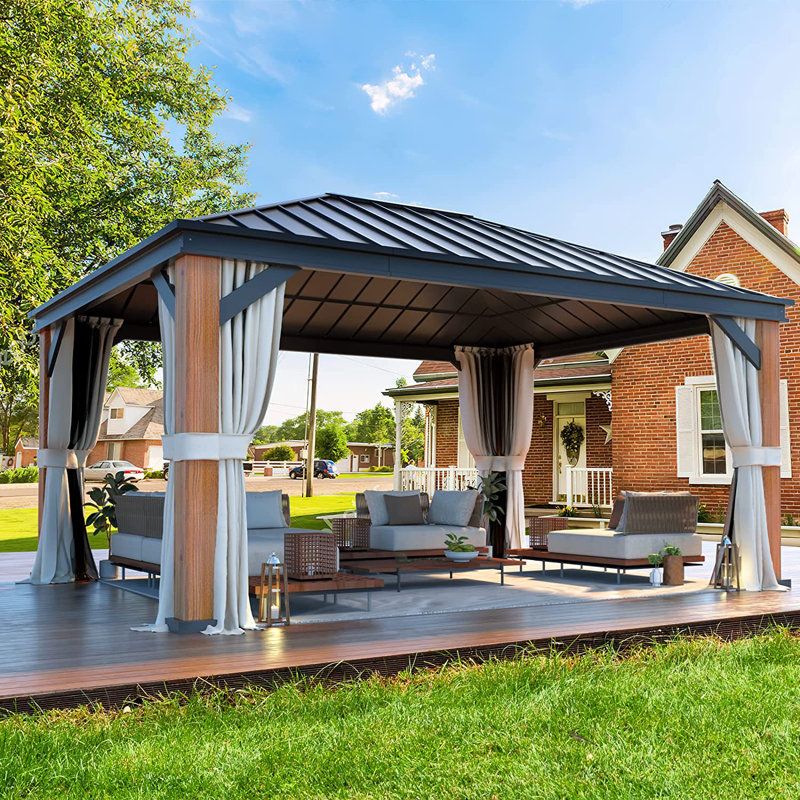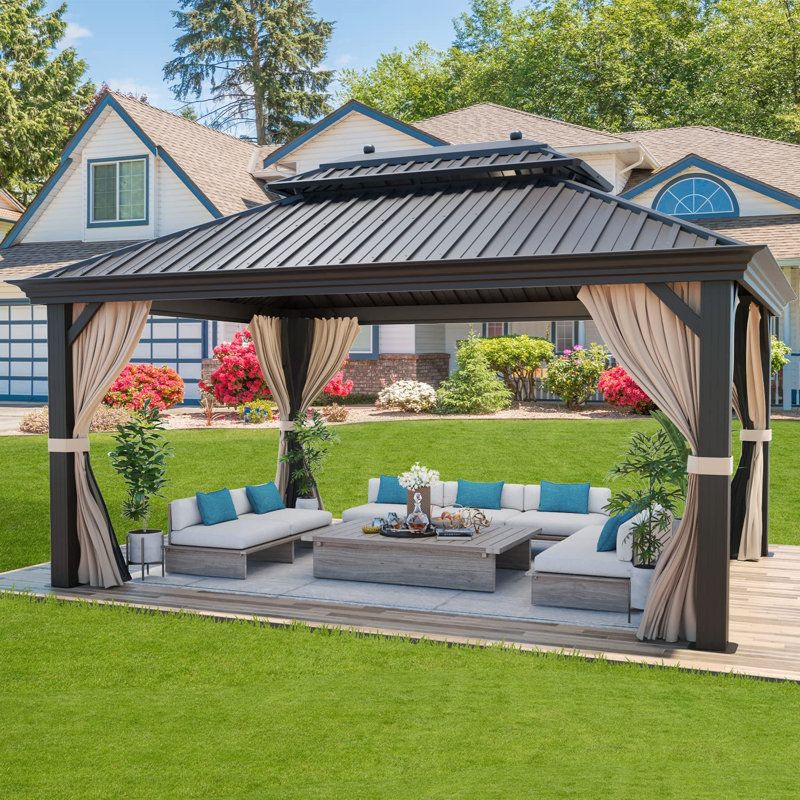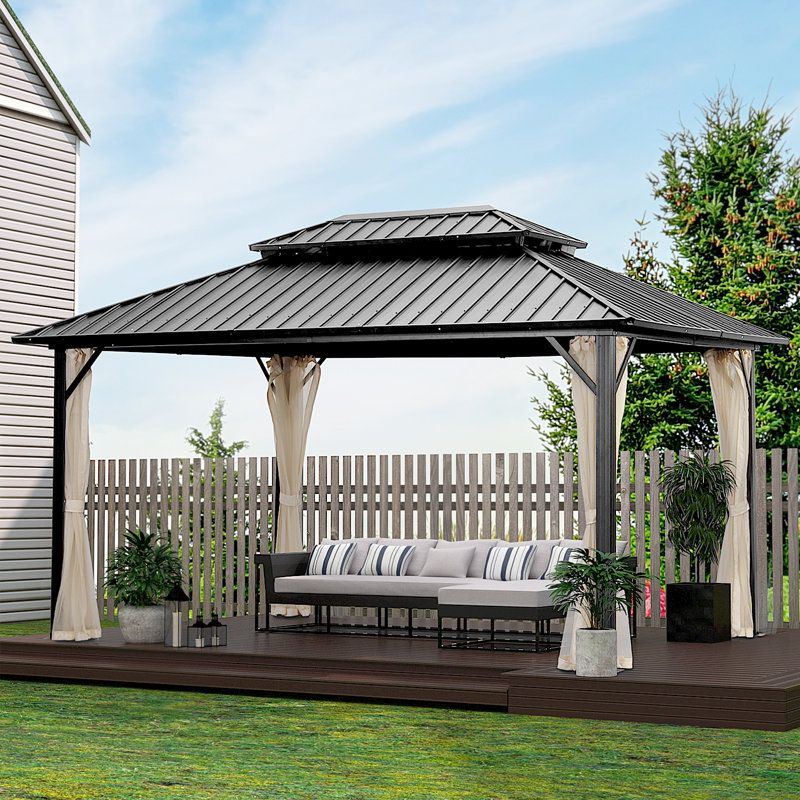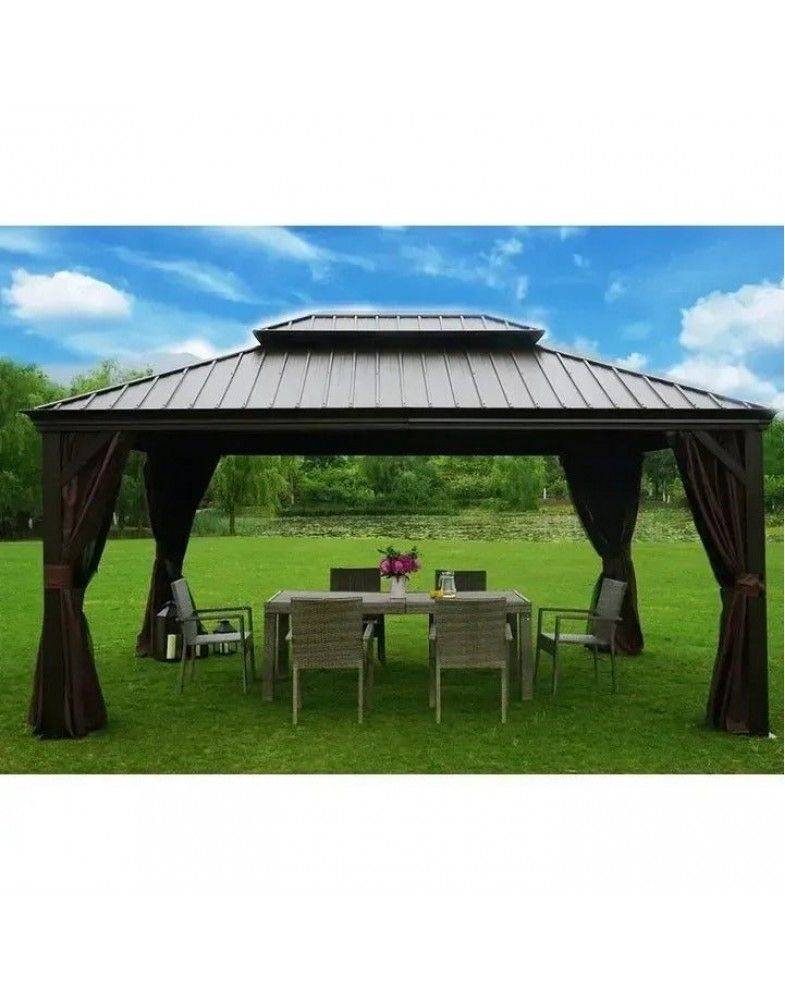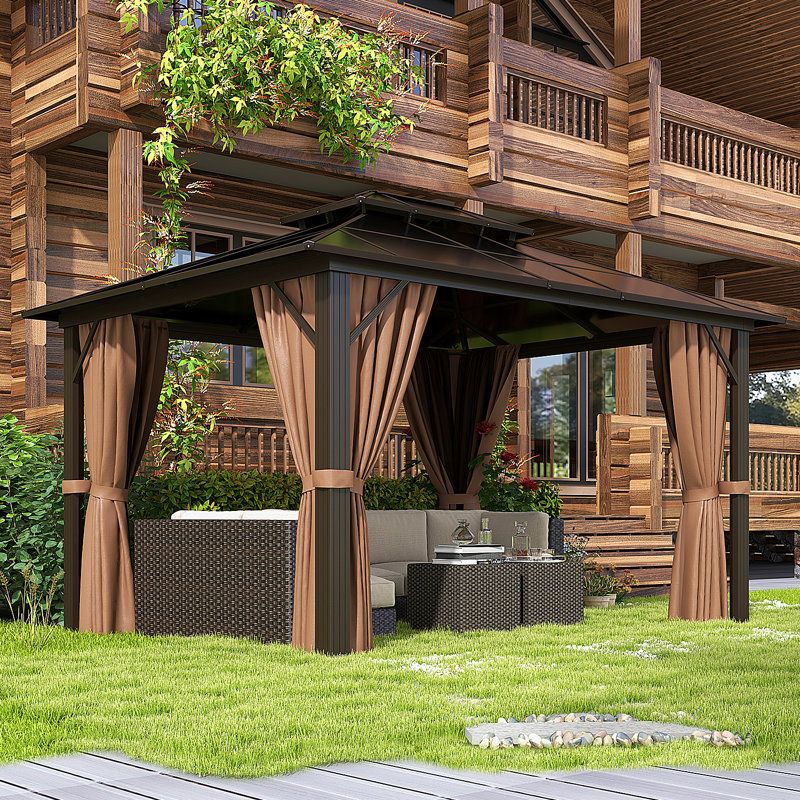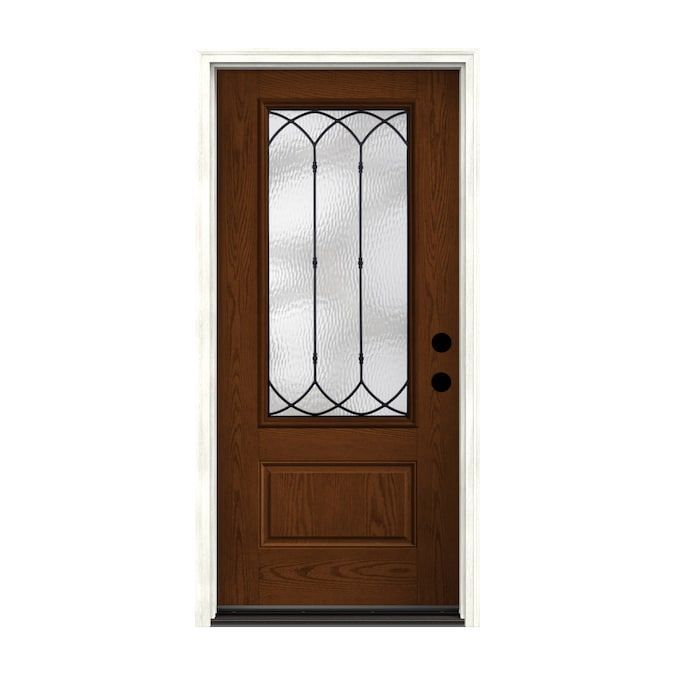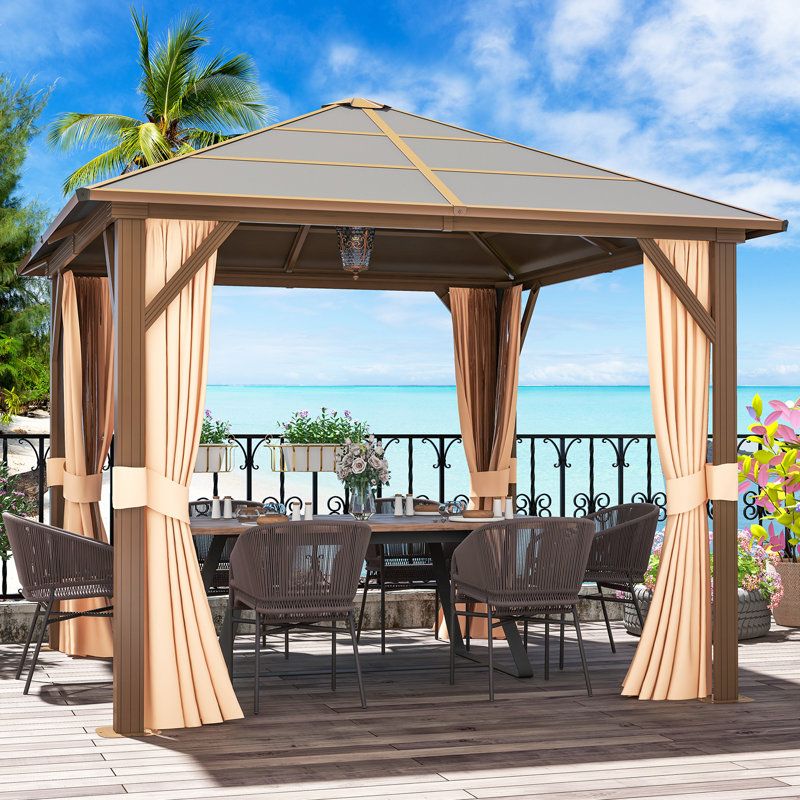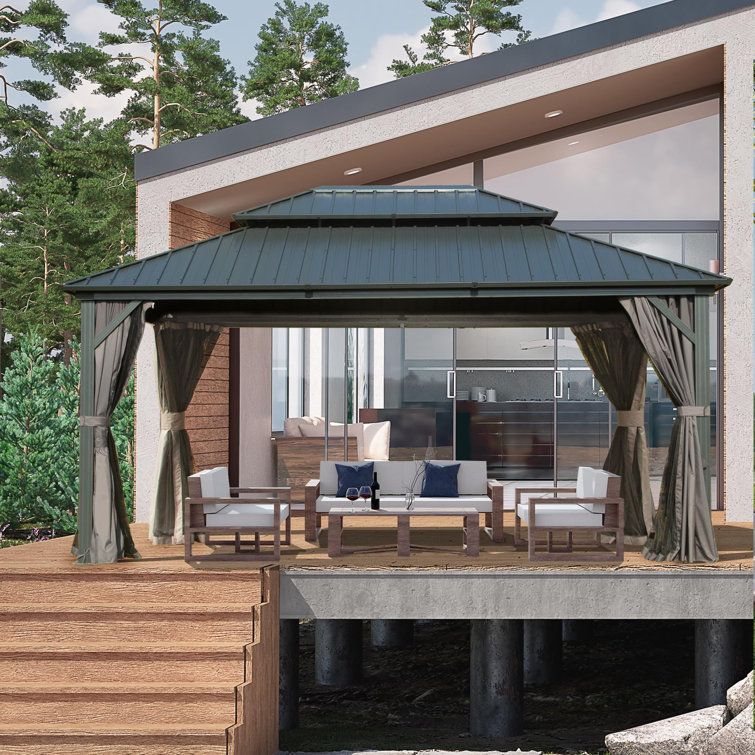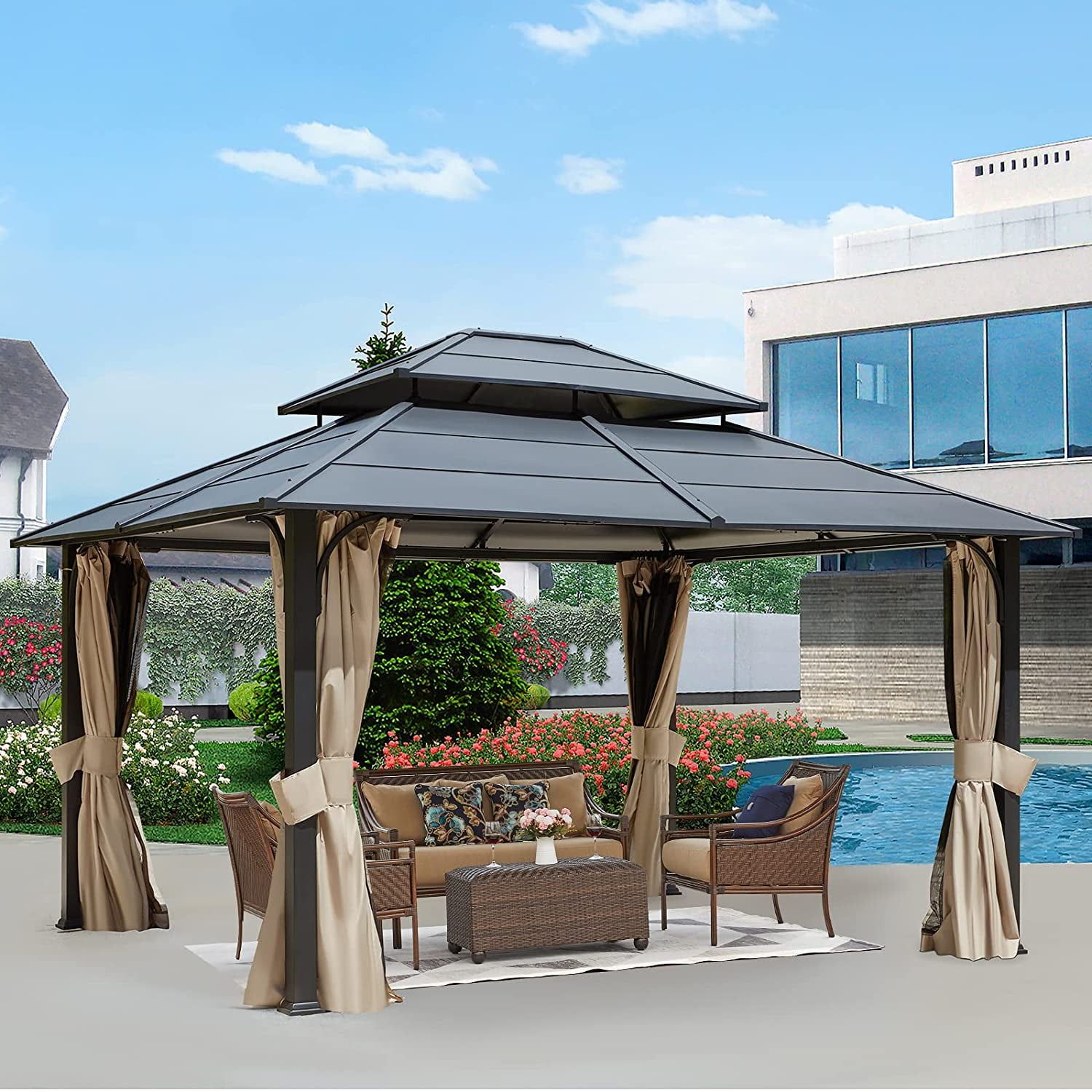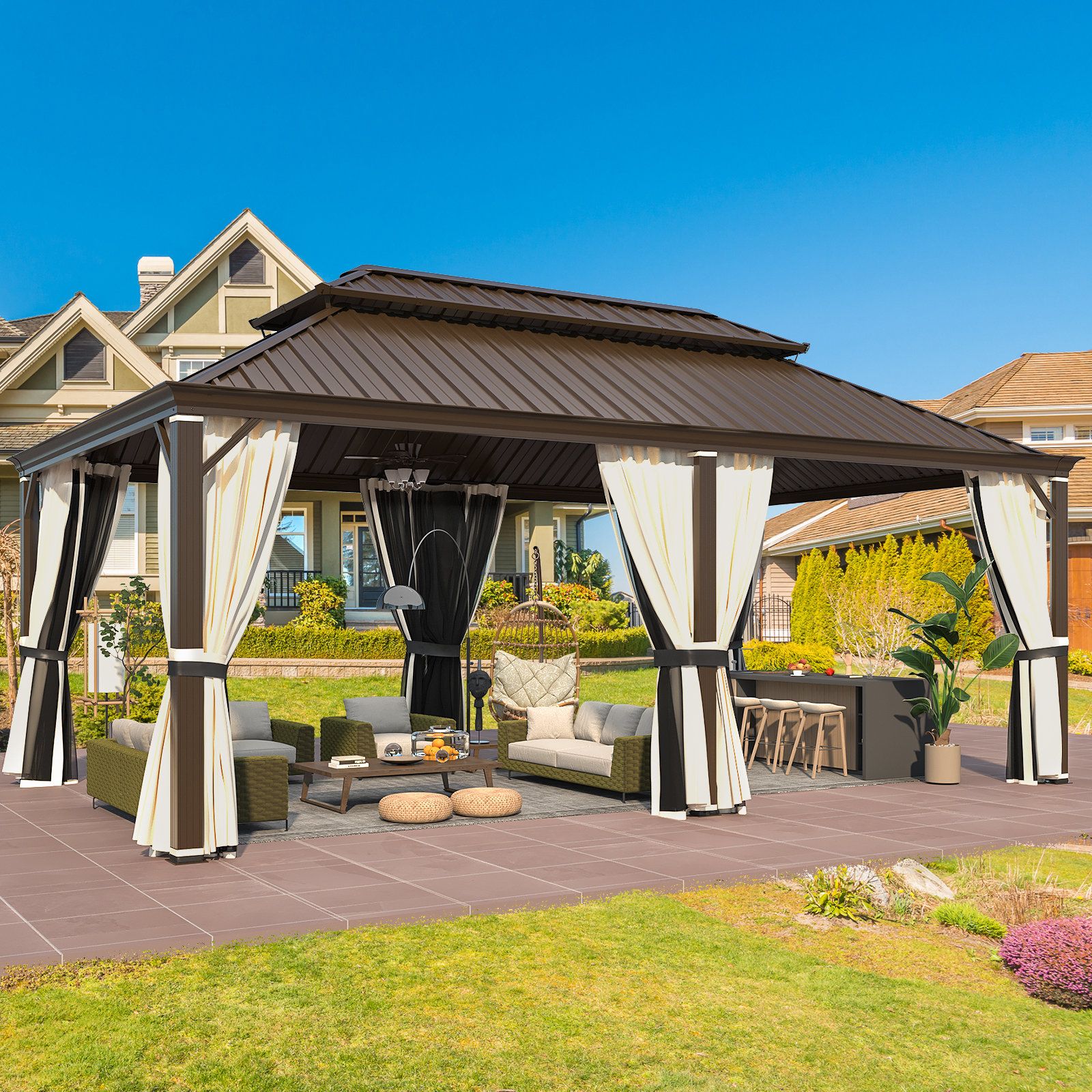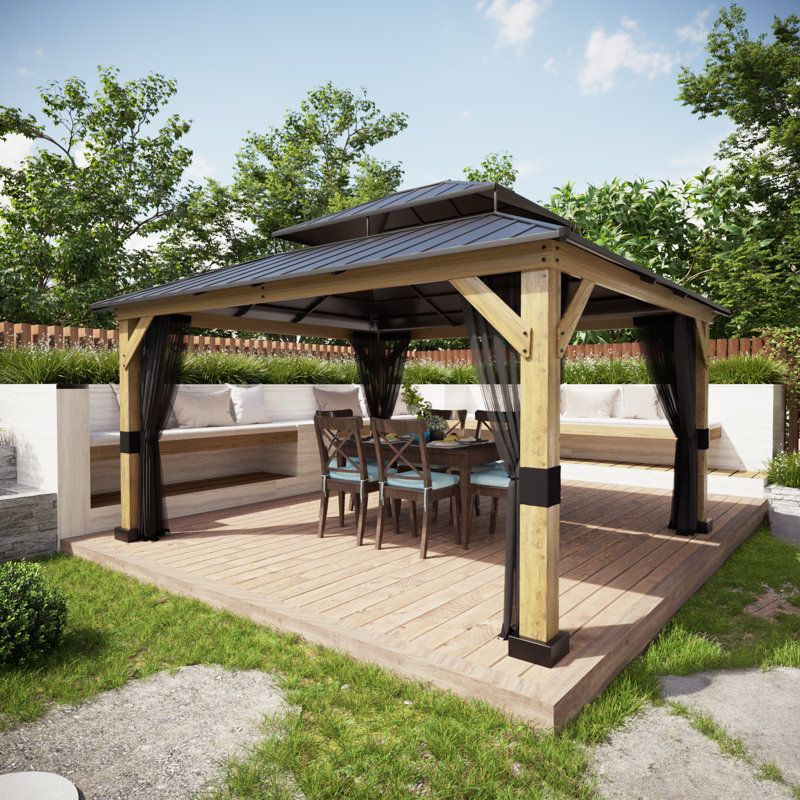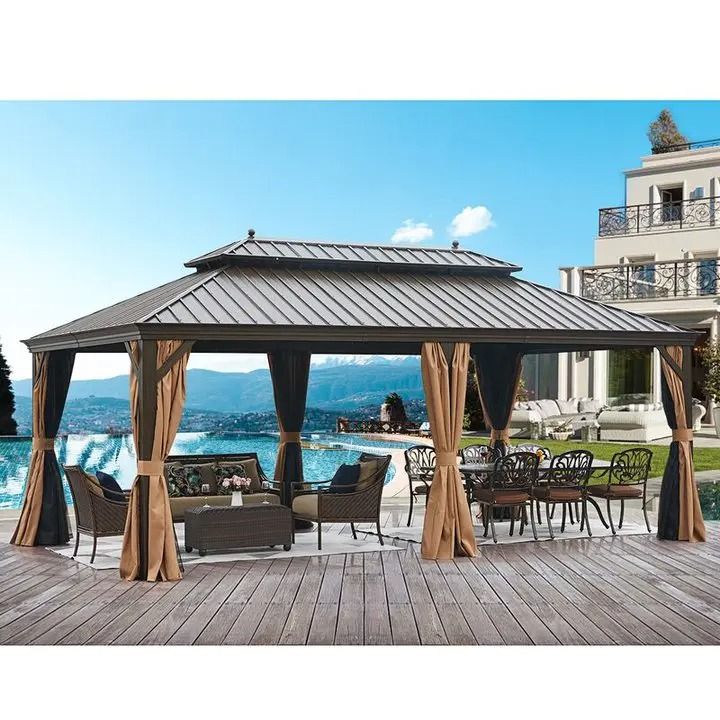A gazebo can be a fantastic addition to your backyard or garden, offering a stylish space to relax, entertain, and enjoy the outdoors. But before you jump in and buy that gorgeous 16×12 gazebo, it’s crucial to consider a few important things. This isn’t just about picking a pretty structure; it’s about making a smart investment that meets your needs and lasts for years to come. We’re going to explore the crucial factors that will help you choose the right gazebo for your space and lifestyle. Let’s dive in and make sure you’re ready to make the most of your new outdoor haven, and not just buy something you’ll regret.
This guide is made for you, whether you’re a total beginner or have some experience with outdoor structures. We’ll break down everything so it’s easy to understand and apply to your own situation. Ready? Let’s get started.
Buying a gazebo, especially a sizable one like a 16×12, is more than just a quick purchase. It’s a decision that impacts your outdoor living space, the aesthetics of your property, and even your budget. Taking the time to plan ahead will save you from potential headaches and ensure you get a gazebo that truly enhances your life. We’ll walk through the critical aspects, from choosing the right materials and location to understanding permits and maintenance. Let’s get started.
Material Matters: Choosing the Right Stuff
The material of your gazebo is probably the most important thing to get right. It dictates how long it will last, how much upkeep it needs, and, of course, how it looks. Here’s a rundown of the most common options:
- Wood: This is the classic choice, offering a natural look that blends beautifully with any landscape. Wood gazebos can be made from various types, such as cedar, redwood, or pressure-treated lumber. Keep in mind that wood needs regular maintenance, like sealing or staining, to protect it from the weather and prevent rot. Also, some types of wood are more resistant to the elements than others.
- Aluminum: Aluminum gazebos are known for being low-maintenance and resistent to rust. They are a great choice if you want a gazebo that can handle different weather conditions. Aluminum is also lightweight, making installation easier and it can be really affordable.
- Vinyl: Vinyl gazebos offer a clean, modern look and are super low-maintenance. You usually only need to wash them to keep them looking great. Vinyl is a popular choice for people who want something durable without the need for regular painting or staining.
- Steel: Steel gazebos are very durable and can withstand harsh weather conditions. They’re often a good option if you live in an area with strong winds or heavy snowfall. However, steel can be prone to rust if it’s not properly treated and maintained.
Consider your local climate, your budget, and how much time you’re willing to dedicate to maintenance when making your decision. For example, if you live in a place with a lot of rain, aluminum might be the best choice. If you hate yard work, vinyl could be perfect.
Location, Location, Location: Finding the Perfect Spot
Where you place your gazebo is almost as important as the type of gazebo you choose. Think about these things:
- Sun and Shade: Do you want your gazebo to be in a sunny spot for lounging or in a shady area for cooler relaxation? Consider the sun’s path throughout the day and how it will affect your enjoyment of the space.
- Proximity to Your Home: How close do you want it to be to your house? Being close to your home can make it easier to access the gazebo from your kitchen or living room. Think about how you’ll use the space. Will you be carrying food and drinks to the gazebo frequently? If so, a nearby location makes sense.
- Privacy: Do you want privacy from neighbors, or do you want a space that feels open and connected to the yard? Think about the surroundings and how your gazebo’s placement will impact your sense of privacy.
- Ground Level and Preparation: Make sure the ground is level where you plan to build. You might need to prepare the site by leveling the ground, adding a foundation (like concrete pavers or a gravel base), or building a deck. This is important for the stability and longevity of your gazebo.
Think about these different things and make sure to measure the space you have. A 16×12 gazebo is a large structure, so you’ll need to make sure you have enough room. Don’t forget to check for any underground utilities before you start digging or building.
Understanding Permits & Regulations
Before you start building, you must check with your local authorities about permits and building codes. These regulations ensure that your gazebo is safe and complies with local standards. Here’s what you should do:
- Check Local Codes: Every city and county has its own rules about building structures, and these vary widely. You might need a permit for a gazebo, especially one as large as 16×12.
- Zoning Regulations: Zoning laws might restrict where you can place your gazebo on your property, how close it can be to property lines, and its height.
- Homeowner’s Association (HOA) Rules: If you live in a community with an HOA, you’ll need to get their approval before you start building. HOAs often have specific guidelines about the appearance and size of outdoor structures.
Failing to get the proper permits can lead to fines, delays, and even having to take down your gazebo. It’s always better to be safe and compliant, so do your homework. You can usually find this information on your city’s website or by calling your local building department.
Budgeting for Your Gazebo: Beyond the Base Price
Your budget should cover more than just the price of the gazebo itself. Think about these other costs:
- Materials & Labor: If you’re hiring someone to install the gazebo, get quotes from multiple contractors. Make sure the quotes are clear and include all the labor, materials, and any additional fees. If you’re doing it yourself, factor in the cost of tools and materials.
- Foundation: Costs for a foundation (concrete, pavers, gravel) can vary depending on the type and size. Get an estimate from a contractor or research the costs if you plan to do it yourself.
- Permits & Inspections: Permit fees can range from a few dollars to several hundred, depending on your location and the project’s scope. Factor in the cost of any required inspections.
- Accessories: Do you want to add screens, curtains, lighting, or furniture? These extras can add up, so include them in your budget from the start.
Creating a detailed budget will help you avoid surprises and ensure you can comfortably afford your gazebo project. Get multiple estimates, and don’t be afraid to ask questions.
Installation: DIY or Professional Help?
Installing a 16×12 gazebo can be a challenging project, especially if you’re not experienced with construction. Here’s how to decide whether to DIY or hire professionals:
- DIY: If you’re comfortable with building projects, have experience with tools, and are willing to put in the time and effort, DIY can save you money. But, be realistic about your skills and the time commitment. Read the instructions carefully, and don’t be afraid to ask for help from friends or family.
- Professional Installation: Hiring a professional installer ensures the gazebo is built correctly and safely. It saves you time, effort, and the potential for mistakes. Get quotes from several contractors and check their references and reviews.
- Consider the Complexity: A 16×12 gazebo is a big project. If the instructions seem complicated or you’re not confident in your ability to handle the work, it’s probably best to hire a professional.
No matter which route you choose, make sure you have all the necessary tools and materials before you start. Always follow safety guidelines, and don’t hesitate to ask for help if you need it.
Ongoing Maintenance and Care
Once your gazebo is built, you’ll need to do some upkeep to keep it in great shape for years to come. Here’s what to expect:
- Cleaning: Regularly clean your gazebo to remove dirt, debris, and mildew. The cleaning method will depend on the material. For example, you can wash vinyl with soap and water, while wood may require special cleaners.
- Inspections: Inspect your gazebo regularly for any signs of damage, such as loose screws, rot, or rust. Address problems quickly to prevent them from getting worse.
- Material-Specific Maintenance: Wood gazebos need periodic sealing or staining to protect them from the elements. Aluminum and vinyl gazebos may require occasional cleaning and touch-ups. Steel gazebos need regular checks for rust, which you can treat with rust inhibitors or paint.
- Winterization (if applicable): In areas with harsh winters, you may need to take steps to protect your gazebo from snow and ice. This might involve removing the roof, covering the gazebo, or taking down any screens or curtains.
Regular maintenance will extend the lifespan of your gazebo and keep it looking its best. Set up a maintenance schedule and stick to it.
Choosing and installing a 16×12 gazebo is a big project, but with careful planning, it can be a rewarding one. By considering the materials, location, permits, budget, installation, and maintenance, you’ll be well-prepared to make an informed decision. Remember to research, ask questions, and take your time. A well-chosen gazebo can become a beloved space in your home, providing years of enjoyment. Good luck, and enjoy your new outdoor oasis, and remember it’s okay if things don’t go perfectly right away.
